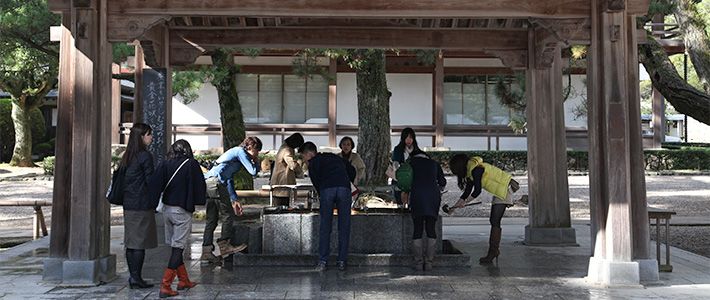
Insider’s Guide to Shintō Shrines
"Temizuya": The Cleansing Ritual
Guideto Japan
Culture- English
- 日本語
- 简体字
- 繁體字
- Français
- Español
- العربية
- Русский
 Continuing along the sandō, we come to the temizuya, situated just in front of the last torii gate, where you will find clear, running water. Before proceeding to the haiden, worshippers stop here to wash their hands and rinse their mouths in an act of ritual purification. This is a simplified, abbreviated version of misogi, the full-body purification rite still practiced by devotees. Originally such ablutions were performed at natural springs or waterways within the shrine grounds, and this is still the case at Ise Shrine, where worshippers cleanse themselves with water from the Isuzu River.
Continuing along the sandō, we come to the temizuya, situated just in front of the last torii gate, where you will find clear, running water. Before proceeding to the haiden, worshippers stop here to wash their hands and rinse their mouths in an act of ritual purification. This is a simplified, abbreviated version of misogi, the full-body purification rite still practiced by devotees. Originally such ablutions were performed at natural springs or waterways within the shrine grounds, and this is still the case at Ise Shrine, where worshippers cleanse themselves with water from the Isuzu River.
Shintō Cleansing Ritual
The entire process should be performed with a single dipperful of water.
 Taking a hishaku dipper in your right hand, scoop some water from the basin and pour a small amount over your left hand.
Taking a hishaku dipper in your right hand, scoop some water from the basin and pour a small amount over your left hand.
 Switch the dipper to your left hand and pour a little water over your right hand.
Switch the dipper to your left hand and pour a little water over your right hand.
 With the dipper in your right hand, pour a little water into your left hand and use it to rinse your mouth.
With the dipper in your right hand, pour a little water into your left hand and use it to rinse your mouth.
 Once again, pour a little water over your left hand. Then turn the dipper upright so that the remaining water rinses the handle. Finally, empty the dipper completely and return it to its place.
Once again, pour a little water over your left hand. Then turn the dipper upright so that the remaining water rinses the handle. Finally, empty the dipper completely and return it to its place.
 Izumo Taisha Shrine, Shimane Prefecture
Izumo Taisha Shrine, Shimane Prefecture
"Temizuya": The Cleansing Ritual (video)
(Banner photo: Temizuya at Izumo Taisha Shrine, Shimane Prefecture. Video produced with the cooperation of Nogi Shrine, Tokyo.)


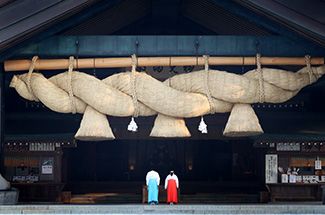 Your Virtual Guide to the Shintō Shrine
Your Virtual Guide to the Shintō Shrine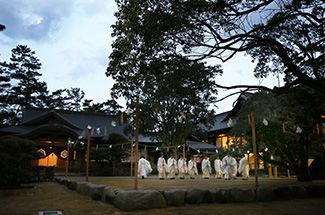 Izumo Taisha Shrine: The Ancient Meeting Place of the Gods (Photos)
Izumo Taisha Shrine: The Ancient Meeting Place of the Gods (Photos)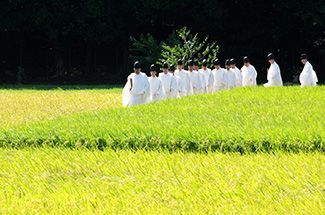 A Year in the Life of Ise Shrine (Photos)
A Year in the Life of Ise Shrine (Photos)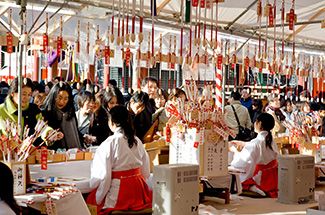 Japan’s Religious Ambivalence: The Shaping and Dismantling of a National Polity
Japan’s Religious Ambivalence: The Shaping and Dismantling of a National Polity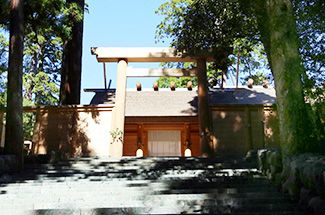 The Japanese World View: Three Keys to Understanding
The Japanese World View: Three Keys to Understanding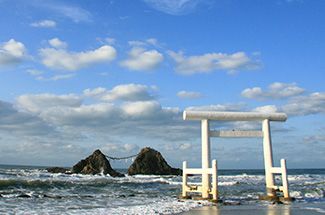 “Kami”: The Evolution of Japan’s Native Gods
“Kami”: The Evolution of Japan’s Native Gods